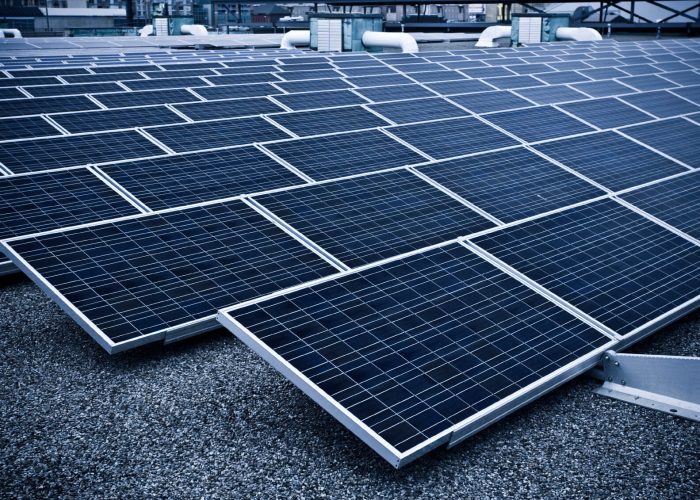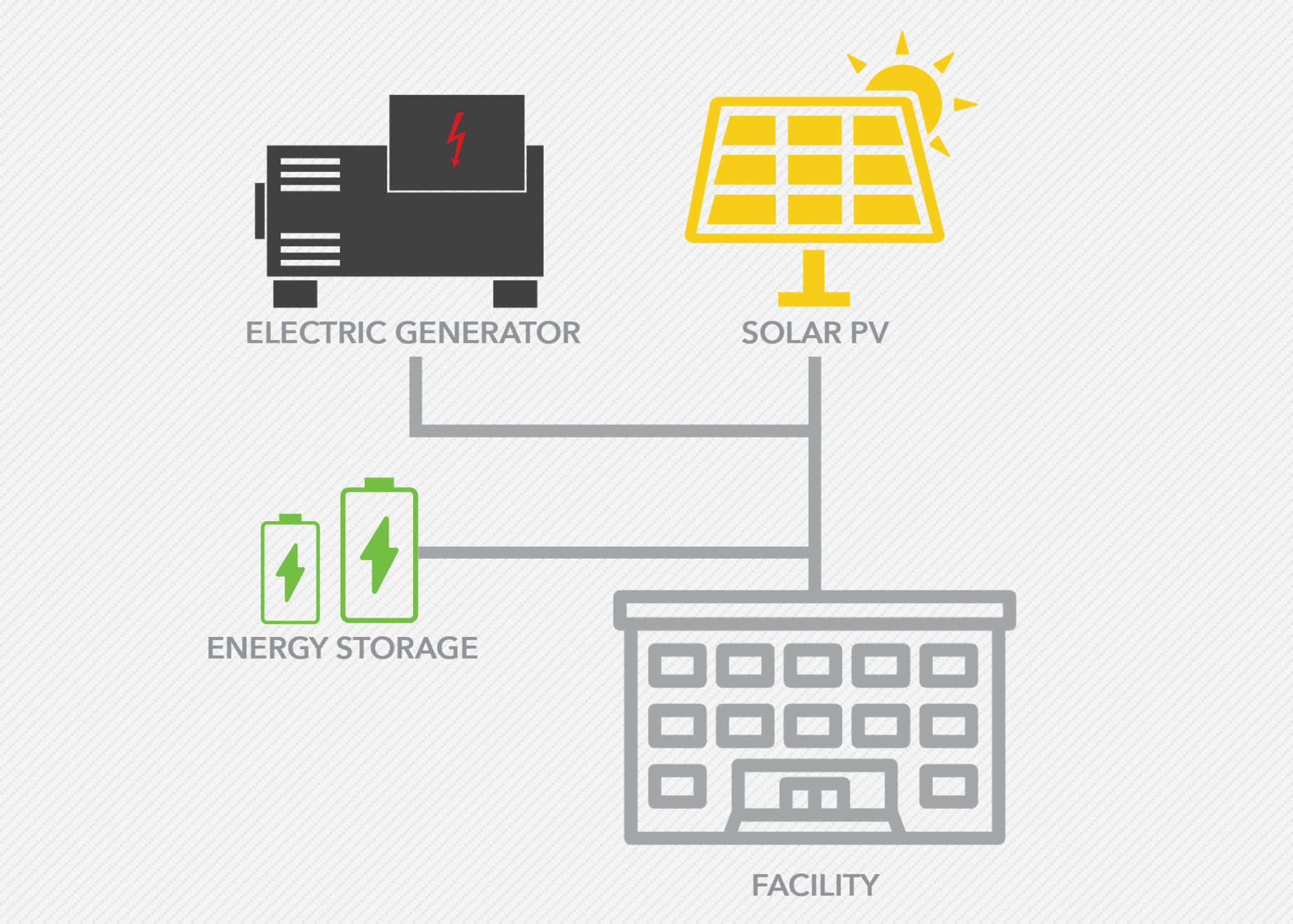How do Solar Microgrids Work?
February 22, 2021

The concept of the electrical grid in the United States dates back to the 1920s when utility companies joined forces to contribute to peak load coverage and provide facilities with a stable source of power. The utility-grade electrical grid present today works as an interconnected system of power plants that generate electricity sold to facilities.
While this system has worked for almost a century, facility owners are now subject to fluctuating utility prices due to the costs of non-renewable fuel sources and environmental regulation. Microgrids are localized energy grids that help facility owners take control back from the traditional grid, maintain a stable flow of power, and lock in utility rates. Microgrids work well for facilities that are 75,000 square feet or larger. Here are some of the basics about microgrids.
Local, self-generation of power can be enticing for owners who want control over their energy costs, but how do microgrids actually work? In order to meet a long-term goal of lower operating and utility costs, microgrids integrate reliable renewable energy resources like solar power with energy storage and the possible addition of high-efficiency gas-powered generation systems. This creates a viable replica of the conventional utility grid owned and controlled by the building owner.
The microgrid system incorporates interconnected production from both a renewable energy source and low-cost natural gas generators. Owners can use this system in two configurations. First, owners who face high demand costs from utility companies can use the microgrid system as a reliable demand reduction energy source. In this configuration, the owner will stay connected to the grid and use a renewable energy source like solar power to reduce kWh consumption from the grid (see Configuration 1). During peak demand times, the gas generators will work with solar power to reduce grid consumption. When utility costs are low during the night, the owner will continue to purchase low-cost power from the utility.

In a situation where local utility companies may not support renewable energy sources, owners can disconnect from the utility grid altogether and use a microgrid system (see Configuration 2). In this configuration, the owner will use the low-cost gas generator as a baseload energy source. The generator will supply power during times that solar cannot, and the microgrid system will use energy storage as the buffer between solar and generator consumption. This configuration gives owners complete control over their electric utilities.

Implementing a microgrid provides facilities with clean energy at a lower cost than conventional power generation. Cost savings and emergency backup power are two major advantages to solar microgrids. Still, the largest advantage is the control owners have over their facilities and the significant energy savings that can be achieved.
Here is a breakdown of the major benefits owners can expect from microgrid systems:
A microgrid reduces utility costs by either disconnecting from the grid or using power from the grid at times of lower cost. While solar power may not be enough to supplement all energy costs completely, owners can secure long-term natural gas contracts. In ideal situations, heat recovery will help reduce gas consumption as well. Solar microgrid systems are flexible and allow different configurations to provide the most energy savings and protect against utility rate spikes and changes.
Solar power today is now at grid parody. For owners whose utility rates are based on kWh consumption, solar power is equal to the cost of power from the grid. Therefore, owners will not pay higher rates for producing solar energy. With the ability to net meter, owners will see positive cash flows in the first year under these rate structures.
Owners who buy power with lower kWh costs but high demand costs can use a microgrid system to reduce demand costs while lowering the amount of kWh consumed from the grid. Depending on the cost of demand, microgrids can show higher annual net savings than a renewable energy system alone.
Energy independence should not be understated here, as a microgrid ensures that a building has backup energy storage. This local energy production can be adjusted to meet federal and state energy storage requirements.
Utilizing renewable energy is a major function of microgrids. Reliable solar power systems offer favorable financing solutions while reducing fossil fuel emissions found in conventional power generators. Additionally, power production from on-site gas generators is cleaner than coal power plants.
Producing your power locally is more efficient than purchasing it from the utility company. There is a large amount of line loss due to the distance electrical energy must travel from the utility company to a facility.
Solar microgrids allow owners to take back the control of their energy systems from the utility company and achieve energy savings. These systems are a flexible, clean, efficient, and cost-effective energy option for facilities.
